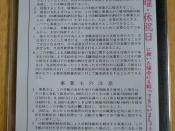Business Brief
My existing workforce is made up of 10,000 workers, each having skills valued at $40,000 per year. The plan calls for the laying off 500 employees. My supervisor has tasked me with evaluating the situation to determine length of time required for payroll savings to recover restructuring cost.
Analysis
When a company conducts a layoff, there is a price to pay in the short run for getting costs. Besides a severance and benefits package, employers will pay out accrued vacation and outplacement-services fees. There are other short-term costs to consider. Managers have to take the time to sit down and break the news to employees, to assemble paperwork, to reallocate work to remaining employees, to train those survivors how to do the work they've absorbed, and to handle other employee issues directly related to the layoff all of which eats managers' and administrative staffs' time and, therefore, money.
The effects of layoffs on surviving employees have a less obvious, but still important, short-term financial impact. It is estimated that each laid-off employee will cost the company 50% of the person's compensation and benefits for each week that the position is vacant, even if there are people performing the duties, and 100% of the person's compensation and benefits if the position is left completely open. Other indirect costs include lost knowledge, skills, contacts, and customers, which are all hard to quantify but are real factors in determining the short-term costs of laying people off.
In the long term, a business's initial cost savings can be obliterated by the cost it incurs to ramp back up. The most ludicrous thing I've seen is that companies might make the balance sheet look good in the short term but later have to hire people back. In essence, the cost savings only last...


